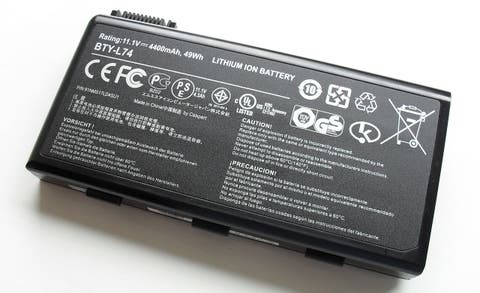Lithium-ion batteries are the most common battery in consumer electronics. They are used in everything from cell phones to power tools to electric cars and more. However they have well defined characteristics that cause them to wear out, and understanding these characteristics can help you to double the life of your batteries or more. This is especially useful for products that do not have replaceable batteries.
Battery wear is loss of capacity and/or increased internal resistance. The latter is not a well known concept, but over time the battery is able to put out less amperage as the battery ages and eventually the battery is unable to generate power quickly enough to operate the appliance at all even though the battery is not empty.
The standard disclaimers apply, all advice is for informational purposes only, CleanTechnica is not responsible for any damages caused by inaccurate information or following any advice provided. Also, new technology may change the characteristics spoken about, making them less or more relevant in the future or even rendering them obsolete.
Lithium-ion batteries come in many chemistries, each with its own characteristics and are often assembled into packs of multiple cells. There are some appliances that can run off a single battery cell (LED flashlights, cell phones, some tools) but in most cases the appliance uses a battery pack which is a number of cells in series or parallel to provide the energy required to make the device operate. In order to have multiple batteries work together properly (and safely), they require control circuitry. This circuitry performs many functions. It can regulate how much power each cell can receive or put out to operate the appliance, it balances the cells to prevent charge differences and reverse charging, monitors the charge level of the pack, determines when the batteries are empty to prevent over discharge (which can permanently harm the cells), and should also be able to brick the pack if the voltage falls too low to recharge safely (below about 2.5V, the cell can start internally growing dendrites which can lead to explosions if the battery is recharged and used, even months or years after the under voltage event). Also, some packs have temperature monitoring/control circuitry to ensure the batteries don’t overheat.
The charger has a specific algorithm to charge the battery, typically starting with constant current then switching to constant voltage (and then stepped reductions in current) until the battery reaches 100% charge. This is required to not overcharge a lithium battery (which is also an explosion risk). This circuity also sets the maximum charge rate which is selected by the manufacturer. Sometimes manufacturers will intentionally design the charger to charge to less than 100% (the maximum that battery can hold) in order to gain a longer lifetime. This is rarely changeable by the end user but is typically good for consumers.
In general, for lithium-ion batteries (no load, meaning the device is not in use) 3.6V per cell is considered empty and 4.2V per cell is charged. There are also chemistries that consider 4.35V as fully charged. Lithium iron phosphate goes from 2.5V empty to 3.65V charged, but these batteries are not as common (this article mostly focuses on non-lithium phosphate batteries though some facets are interchangeable). For all batteries, the voltages between empty and full determine percent charge remaining, though it’s not a perfect science and percent charge at a specific voltage is chemistry dependent. For example in many chemistries 4.0V/cell is about 80% but for some chemistries it is about 85% charge.
Lithium batteries age from the following factors:
- Time
- Cycles
- Storage/operating temperature
- Charge and discharge characteristics
- Depth of charge and discharge
- Time spent at near empty/near full
Let’s look at each factor:
Time
A lithium battery begins to age as soon as it leaves the assembly line. There is not much you can do about this except to always buy the newest battery/appliance you can and not buy extras to store unused for the future (except for very unusual circumstances such as an incredible sale or the battery is being discontinued).
Batteries are typically purchased as a pack or already built into an appliance. Look carefully for a date stamp of when the item was manufactured, which is often present. In general, manufacturers use recent cells in their products. The battery itself will usually have a date code on it, though taking packs/appliances apart to find it is often unrealistic or will void the warranty. However, if you can find the date code on the battery cell itself you can Google how to decipher it.
Cycles
Each time you fully charge and then fully drain the battery you have used up one cycle. The number of cycles a particular battery is expected to last until it hits End Of Life (EOL) is sometimes available if you Google the datasheet for that cell. Modern lithium-ion batteries last anywhere from 300-15,000 cycles depending on the chemistry of the cell(s). EOL is often considered 80% of capacity remaining (industry standard). Many consumers will continue using batteries that have <80% capacity remaining but often this threshold is the harbinger of rapid cell/pack deterioration to come.
Partial discharges where you don’t fully charge or fully discharge will give you many more cycles before the battery wears out and is the best way to maximize this facet of lithium-ion battery wear. Some manufacturers consider even partial discharges to be a cycle, but in general a cycle is going from 100% charge to 0% charge.
V2G, or using the batteries of electric vehicles to power your local electricity grid, adds many cycles to the battery and will cause unnecessary battery wear. This is best avoided on pricey automotive batteries as it means your vehicle will lose range much more quickly from battery wear then it would have otherwise. It can take years off the life of your vehicle.
Stay tuned for Part Two, Storage/Operating Temperature and Charging
A summary of the terminology used in the battery world:
Charging algorithm = Battery is charged at Constant Current, then near full charge (typically over 80%) the charger switches to Constant Voltage. The charging rate slows until the battery reaches 100% charge. Many EVs modify this algorithm.
C = Capacity of the battery
- Battery ability to output power is measured in 1/C. 1C means the battery drained in one hour, 2C means 30 minutes (1/2 hour), 3C means empty in 20 minutes (1/3 of an hour) and so forth.
- Charging can also be measured in C, 1C means charged in 1 hour, 0.5C charged in 2 hours, 2C charged in 30 minutes and so forth.
Charge rates are not typically linear, the battery is typically charged more rapidly until it reaches the Constant Voltage stage.
Series = Multiple batteries linked in a chain to increase the total voltage of the pack.
Parallel = Multiple batteries linked side by side to increase amperage instead of voltage.
(x)S(x)P configuration = explains how multiple batteries are linked. 4S2P for example means 8 cells, four in Series and two Parallel rows
Volts (V) = Electric potential. Power outlets are measured in volts.
Amps (A)= Number of Coulombs of electrons carrying those volts.
Watts (W)= Volts x Amps. Energy/Power usage is often measured in watts. A kilowatt is 1000 watts. kWh is Kilowatts per hour.
Energy is measured in Joules and is convertible to Watts/second if you have a time component.
Power = Energy over time. Typically measured in Watts. One Joule per second is 1 watt. The same number of Joules or Watts in half the time is twice the power.
Nominal voltage = Voltage used to calculate Watts of a battery.
Battery capacity = How many Ah of power the battery can output (when new).
Load = Device that uses the power from the battery.
Internal resistance of a battery affects its Power output. Increased internal resistance is the reduction in rate of Power output the battery can deliver. Energy output is affected somewhat by increased internal resistance.
CLEANTECNICAL






